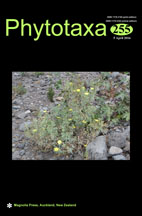Abstract
Saranthe ustulata was described by Otto Georg Petersen in 1890 based on undated material collected by Johann Friedrich Theodor Müller in southern Brazil during the nineteenth century. Since then, absolutely no information was available about this species, and it has even recently been thought as probably extinct. More than a century later, we discovered in the “Railroad of Bromeliads” (Apiúna municipality, Santa Catarina state, Brazil) a population of S. ustulata. A detailed description of this species is provided and its conservation status is assessed. Furthermore, we designed a lectotype and an epitype for this name. Our results reinforce the urgent need of more taxonomic research both in tropical regions, and in older herbaria, where a multitude of new species still await discovery and description.

